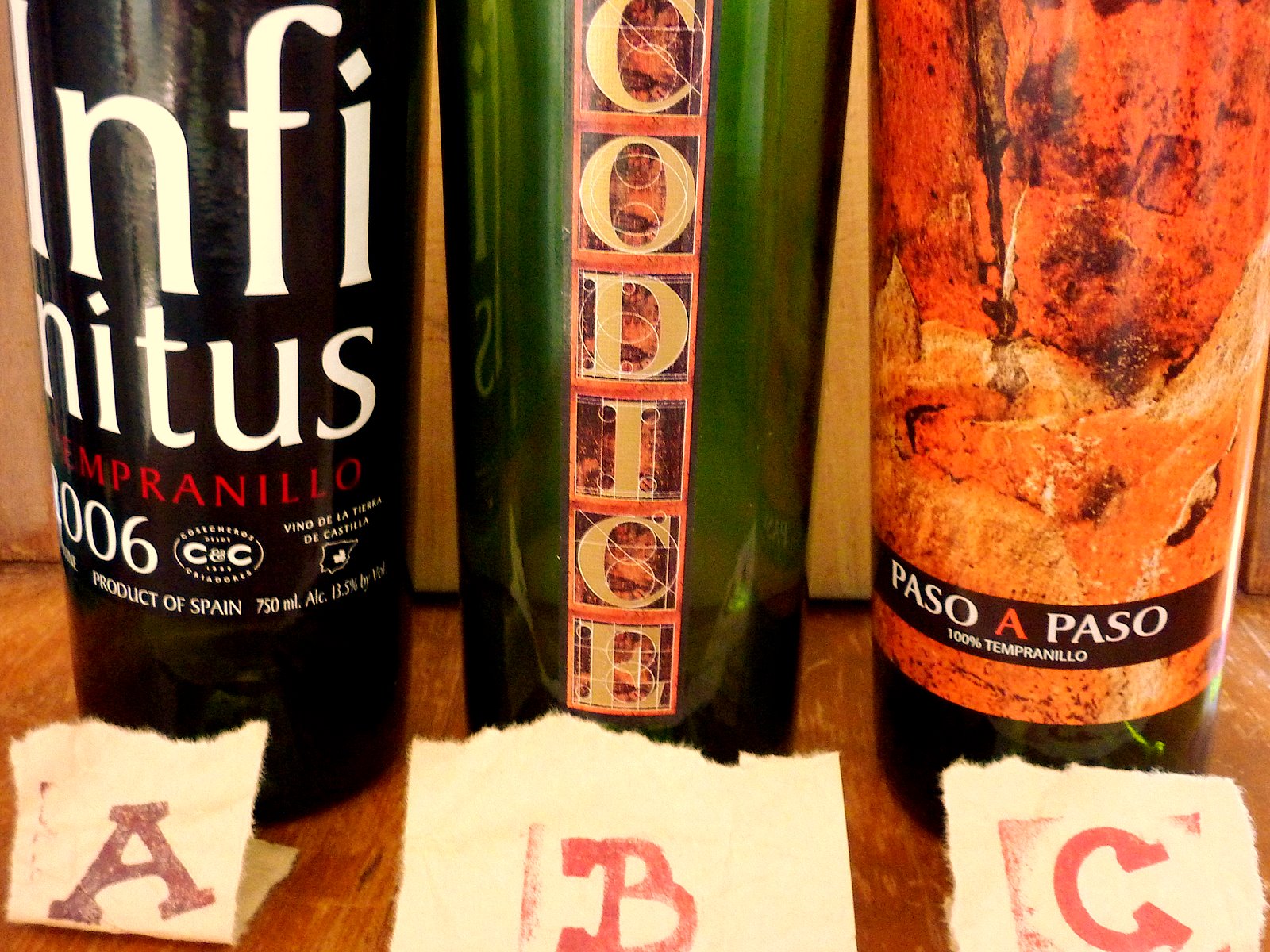On Wednesday, I was reading Eric Asimov's column in the New York Times Dining & Wine section. (I pretty much never read the paper in the real, but we were on vacation and Doug woke me up with a copy of the paper and a croissant. It was pretty damn great on all counts.) Plenty of times, his musings on wine are way beyond me, but this particular piece caught my attention. He claimed that wine notes become more opaque with a lot of description, that less words provide the reader with a clearer, if more basic, sense of the wine. Music to my ears. Probably most of us have had the experience of reading tasting notes and a) despairing that our palate can't ferret out the same range and complexity of flavors that the pros seem to OR b) becoming so disgusted with pretentious wine descriptions ("tastes like rainwater," "reminds me of a Cuban cigar") that we want to abandon the whole wine-tasting endeavor in favor of cheap beer and a burger. Asimov's solution is to categorize wines in one of two ways: sweet or savory. Is fruit the overwhelming flavor? Or does earthiness and minerality dominate the glass? By simplifying our descriptors, maybe we'll all come away with a better sense of the categories of wines we like.
Which brings me to our recent experiment with budget wines. We've been cooking with some spanish flavors lately (smoked paprika is my new favorite spice) and it seemed only right to explore Tempranillo, the reigning Spanish grape. Tempranillo is most definitely a savory wine. Yes, cherry plays an important supporting role, but herbs and leather are characteristic of this rustic varietal.
A. I tend to like things rough around the edges (whiskey, furniture, men), and so Tempranillo seemed like an ideal wine for me. This first bottle made me doubt that conclusion. It had a sweet start, with a strong odd taste that I couldn't identify. My best guess was green pepper? But, the wine responded well to air and as it opened, the classic flavor profile came out - leather, herbs, and dark red fruits. Not my favorite, but certainly passable.
Infinitus Tempranillo (2006)
Spain, Vino de la Tierra de Castilla
$10
B. For me, the 2007 Codice was a much bigger success. The wine is drinkable, with structure and tannins. True to form, this is a savory Tempranillo, with a musky, woodsy odor and nicely balanced cherry and plum notes. It reminded us of one of our old standbys - Viu Manent, a Chilean cabernet. We served it with an improvised dinner of baked pasta with leftover marinara sauce, and unfortunately the acidity and bite of the sauce killed the juicy tones and flattened some of the wine's complexity. (But, if you are looking for something to do with leftover marinara sauce, can I recommend this dinner? Toss the sauce with cooked penne and washed, chopped spinach. Grate mozzarella cheese over the top. Bake in 350 degree oven for fifteen minutes. Enjoy with a different wine.)
Codice (2007)
Vino de la Tierra de Castilla
$10C. The last wine was also a keeper, making me think that Spanish wines are a good avenue for budget wine drinkers. This red was dry, drinkable, and softer than the others. It tasted of smoke or leather on the finish, and overall was more woodsy than I expected. This one might have been the winner in the bunch.
Paso a Paso Tempranillo
Spain (2008)
$10



I love all things de España, but I've never been able to get behind Tempranillo. Maybe I need to give it some more air...
ReplyDelete